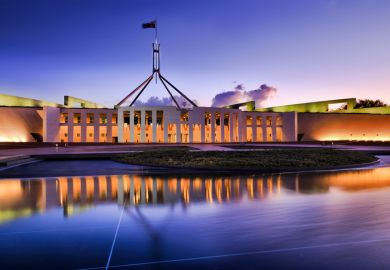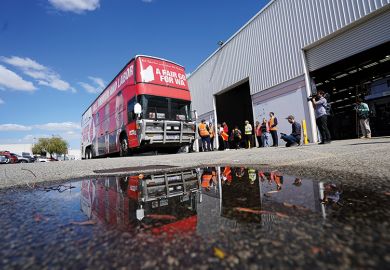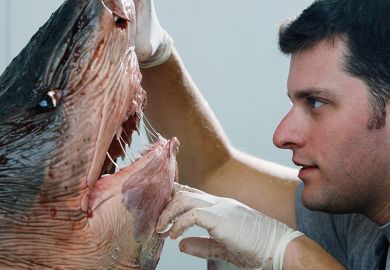Australia’s opposition Labor Party appears to have watered down an election promise to spend an extra A$10 billion (£5.4 billion) on universities, with the money now to be shared with the country’s public vocational colleges.
A new Labor costing document indicates that the extra money, which Labor has previously pledged to restore the demand-driven university funding system over the next decade, will go to technical and further education colleges (TAFEs) as well as universities.
Labor has promised to revitalise the TAFE sector, which is reeling from years of state government funding cuts and disastrous open market reforms. But the suggestion that TAFEs will share money previously earmarked exclusively for universities could inflame fears that the rebuilding of vocational education could occur at higher education’s expense.
Labor told Times Higher Education that a Parliamentary Budget Office analysis had revealed that the cost of restoring the demand-driven system would be lower than previously thought, but the policy remained unchanged.
The document suggests a Labor government would invest just over A$10 billion more in TAFEs and universities over the next 11 financial years, with the bulk of this money back-ended beyond the four-year forward estimates when government spending plans are locked in.
Just A$1.6 billion would flow over this period, with the rest to be allocated beyond mid-2023. Fifty-nine per cent of the extra funds would be forthcoming in the last four years.
The document also says universities would have to wait at least two years before they began to see much of the extra money earmarked specifically for higher education.
It says the sector would reap A$823 million over the next four financial years under a package of promises including the removal of caps on funded undergraduate places, a A$300 million future fund for university infrastructure and a A$174 million programme to foster participation in underprivileged communities.
But 83 per cent of this money would not appear until the second half of the forward estimates. Just A$16 million would flow next financial year, which starts in July, with another A$123 million pledged the year after.
The document says Labor would pay for its spending plans – which also include major investments in childcare, schools, housing and health and A$59 billion worth of tax cuts – by “making multinationals pay their fair share and closing down loopholes for the top end of town”.
It says it will save more than A$32 billion over the next four years through a mixture of reforms of dividend imputation, negative gearing, capital gains and trusts, along with changes to tax deductions and superannuation concessions.
The document flags a raft of allocations for science and research over the next four years. They include A$65 million for marine and reef science, A$56 million for science and research infrastructure, A$57 million for an electric vehicle strategy – A$32 million of which will be quarantined for research and development – and A$6 million towards the Square Kilometre Array radio telescope.
Labor has also set aside A$1 million for a major review of research following the election, if it wins, along with A$3 million for a national centre for artificial intelligence excellence.
The party would also forfeit A$170 million through a “collaboration premium” designed to foster collaborations between businesses and public research institutions. Under the plan, firms would qualify for a 10 per cent premium to an existing research and development tax incentive scheme for money spent undertaking joint research, embedding their staff in universities, employing recent doctoral graduates or hiring current PhD students.
Register to continue
Why register?
- Registration is free and only takes a moment
- Once registered, you can read 3 articles a month
- Sign up for our newsletter
Subscribe
Or subscribe for unlimited access to:
- Unlimited access to news, views, insights & reviews
- Digital editions
- Digital access to THE’s university and college rankings analysis
Already registered or a current subscriber?







